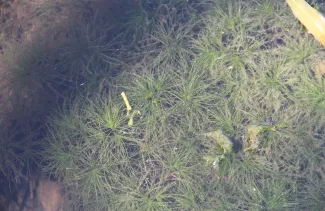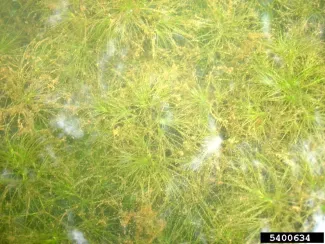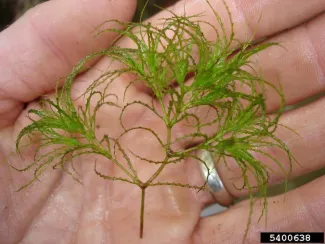Brittle Naiad
Native to Europe, western Asia, and northern Africa, and was planted for waterfowl food in the 1930s. Easily spread by wind and water currents, boats and trailers, and waterfowl.
Was first observed in Oklahoma in 1979, in Robert S. Kerr Reservoir.
Impacts
Can replace native species and create dense shoals and surface mats, which can hinder swimming, fishing, and boating.
Identification Key
- Annual submersed rooted or floating plant
- Slender, branching stems and fibrous roots
- Compact and relatively bushy- can grow up to 4 feet


